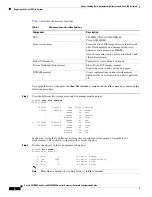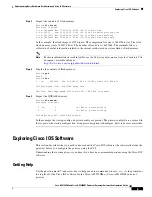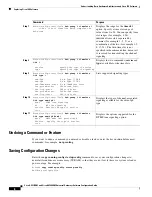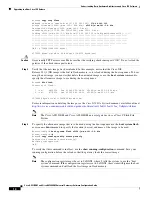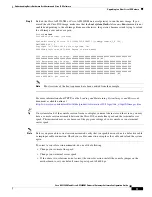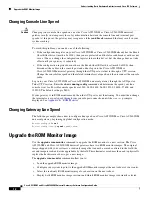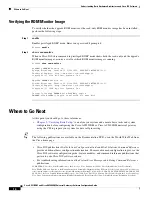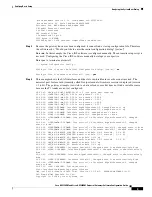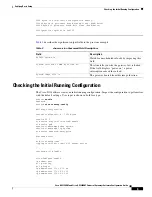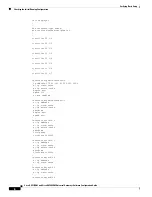
Americas Headquarters:
Cisco Systems, Inc., 170 West Tasman Drive, San Jose, CA 95134-1706 USA
Verifying Basic Setup
The information in this chapter applies to the Cisco AS5350XM and Cisco AS5400XM universal
gateways. This chapter details the tasks required to verify that your basic system components are
functioning normally:
•
Gigabit Ethernet Configuration, page 1
•
Analyzing the System Boot Dialog, page 2
•
Checking the Initial Running Configuration, page 5
•
Investigating Memory Usage, page 7
•
Inspecting CPU Utilization, page 8
•
Displaying Component Status Using the Health Monitor, page 10
•
Using the Interface Queue Wedge Monitor, page 11
•
Where to Go Next, page 14
Gigabit Ethernet Configuration
The Cisco AS5350XM and AS5400XM universal gateway Ethernet ports are Gigabit Ethernet ports
(labeled GE0 and GE1 on the chassis). The Cisco IOS firmware and software is designed so that
configurations for Fast Ethernet will work on the Cisco AS5350XM and AS5400XM universal gateways
without requiring any modification by the user.
If the Cisco IOS commands,
write
or
copy running-config startup-config
have been used to save the
configuration to NVRAM, then all references to Ethernet interfaces will now be GigabitEther, and the
IOS commands,
write terminal
and
show running configuration
will always show GigabitEther.
If you must have FastEther available as a searchable word for any scripts you are using, you can use the
ROMMON command,
ethertype fe
to change GigabitEther to FastEther. Once you enter
ethertype fe
,
the IOS image will only recognize FastEther. It will
not
recognize GigabitEther.


